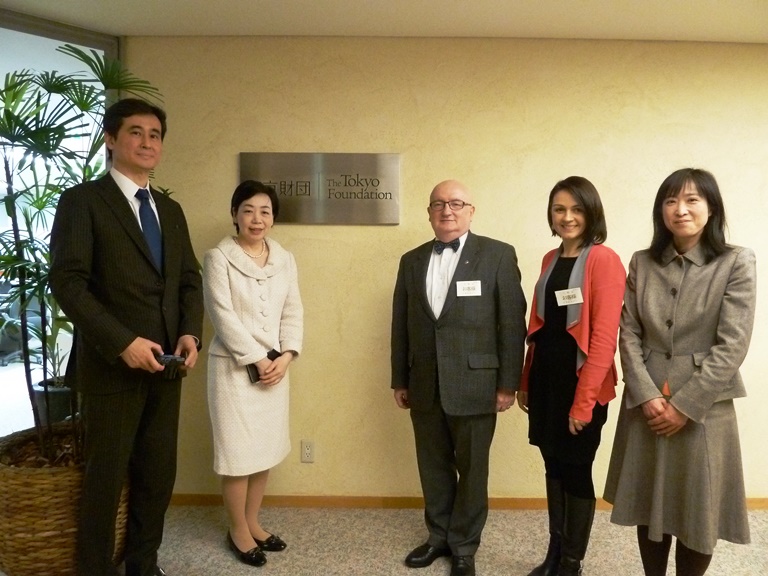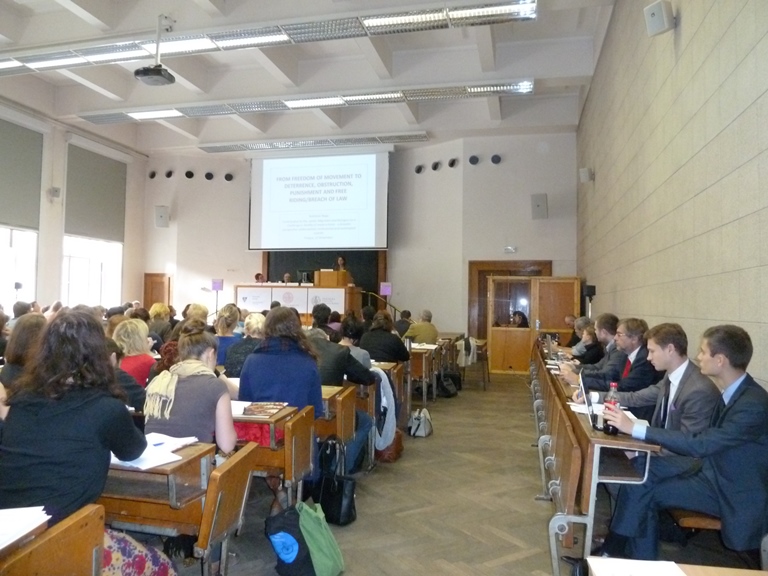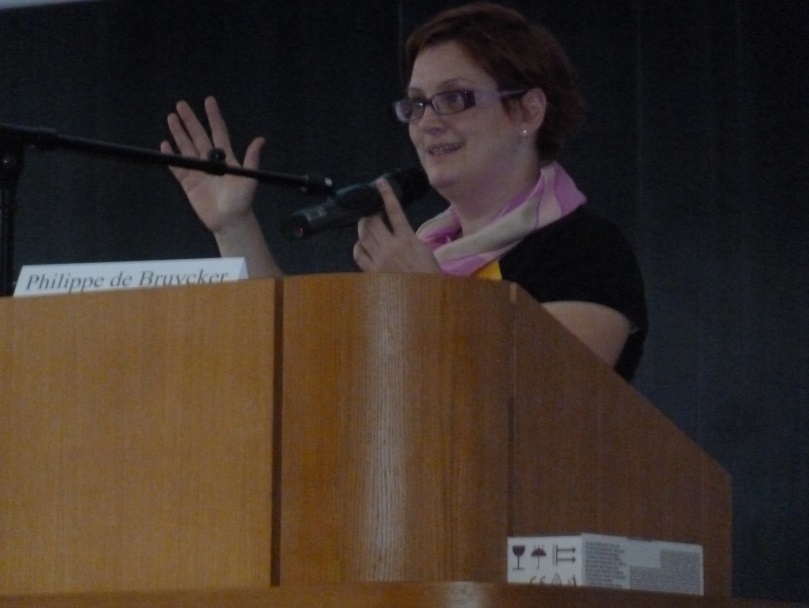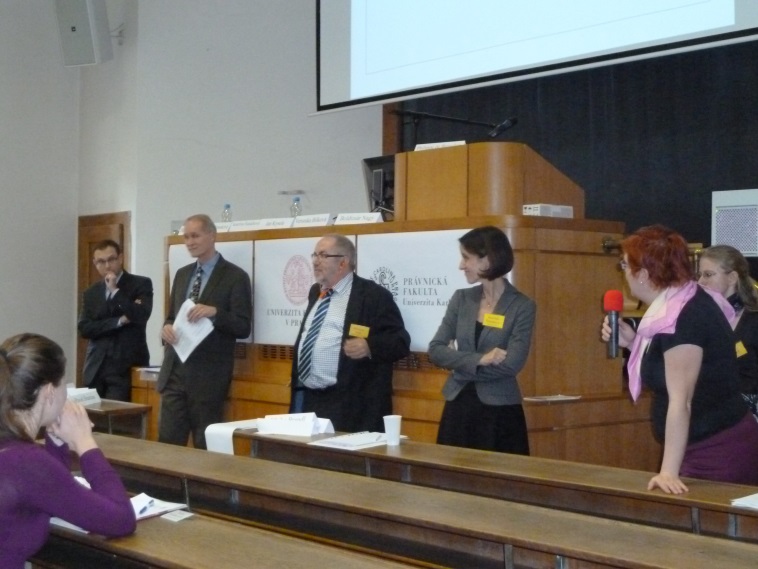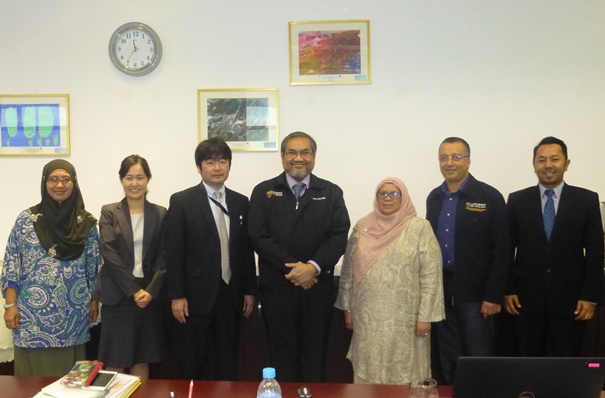Christopher Lees, a Sylff fellow at the National and Kapodistrian University of Athens, spent time at the University of Hamburg, Germany carrying out analysis and refining his research on youth language on social networking sites. In this article, he describes his findings on digital literacy practices among Greek teenagers using Facebook, and describes how they use linguistic creativity to achieve their communicative goals.
* * *
Background 
The way teenagers speak and interact has long been a matter of interest in sociolinguistics, while often being a matter of concern and even controversy in academic circles and among the general public. There can be no doubt that teenagers seem to have their own codes of communication, which are markedly different from those of their elders. This has given rise to many questions both within and outside academia. What is it, for instance, that makes teenagers use different varieties of language? How do we classify these varieties and can we claim, as many do, that these “alternative” uses of language pose a threat to the future of the languages we speak? A new element to this debate in recent years is the question of how teenagers communicate on social networking sites such as Facebook. This has brought a whole new set of questions related to an oral-like style of writing, inconsistent grammar and punctuation, and frequent mixtures of various different, particularly in countries whose languages are regarded as “less widely spoken.”
My field of sociolinguistics aims to provide answers to these questions. For example, it is widely accepted that one of the reasons why teenagers exhibit such unique linguistic practices is because they mix in narrower circles than was the case in previous generations, largely due to the fast-paced development of technology (Kakridi-Ferrari 2005: 195). Since the Second World War, technology has replaced many previous professions, rendering many skills obsolete. This has created a need for young people to be educated for longer than was previously the norm in order for them to keep pace with the new demands created by new technology. This has forged a closer bond between teenagers and other young people who spend more time with each other and have developed a new type of “youth culture” as a result of this new social dynamic. This culture has brought with it new ways of communicating that differ from the varieties of language used by these people’s parents and previous generations and reflect the shifting social reality of which young people are a part.
Social networking sites and Facebook in particular have provided young people with an entirely new “meeting place” where they can chat with their friends, exchange ideas, play games, and share and comment on videos and images. Such a platform is in itself an entirely new social reality for teenagers that has facilitated the development of new language practices. The study of the language practices seen on social networking sites is one of the latest areas of interest to linguists involved what is known as Computer Mediated Communication. This is the area that my research focuses on.
The Research
Following the traditions of sociolinguistics and computer-mediated communication, my PhD research focuses on the language practices of Greek teenagers on Facebook. A total of 15 secondary school pupils are participating in my PhD research, 10 of them enrolled at the Model Experimental School of the University of Thessaloniki and the remaining five at the Model Experimental Secondary School of the University of Macedonia in the area of Neapoli. The two schools are located in different areas of the Greek city of Thessaloniki. The latter is located in a socially underprivileged area of the city, whereas the former is in the center and enjoys a reputation as a school of academic excellence, not least due to its affiliation with the Aristotle University of Thessaloniki. The rationale behind this selection was the hope that the linguistic data derived from the pupils might reveal differences that could be attributed to the different social backgrounds of the pupils. Consent was obtained from parents and guardians, as well as from the pupils themselves. In addition, pseudonyms have been used whenever reference is made to the data, so as to protect the identity of the participants, in line with research ethics (D’Arcy & Young 2012: 540-541).

Sunset over the Alster, Hamburg.
After receiving my SRA scholarship, I travelled to the University of Hamburg in Germany to refine and discuss the categories to be included in my analysis. In total, I spent two and a half weeks at the Department of German Philology, where I was able to discuss my research with experts in my field and use their resources to develop a concrete qualitative and quantitative approach to analyzing the data collected from the pupils. I was also able to see at first hand how research has been conducted for similar projects in German using the model of online ethnography (Androutsopoulos 2008). Online ethnography refers to observing the linguistic practices of specific communities of Internet users, together with real contact with the users themselves by means of interviews, discussions, etc. The advantage of this approach is that the researcher is able to cross-check and verify his or her interpretations against the explanations and opinions of the producers of the language practices under study. This blended approach can therefore help produce a more reliable data analysis.
In comparison with German, Greek is one of the less widely spoken languages of the EU. One of the consequences of this is that its speakers are exposed to a much greater variety of languages—particularly English through the mainstream media—than speakers of more widely spoken languages like English and French. Three main tendencies observed in Greek teenagers’ linguistic practices on Facebook form the core of my research. These are as follows:
1. Features of digital orality in teenagers’ “written” linguistic practices on Facebook
2. Use of alternate script choices
3. Use of English
In general terms, the term digital orality refers to “oral-like” features employed by users of digital media while communicating in writing (Soffer 2010: 388). The features of digital orality studied in my PhD research are diminutives and augmentatives, as well as oral discourse markers. Such features, in particular, are highly common in the language practices of Greek teenagers on Facebook and fulfill specific pragmatic functions for the users and their fellow participants, as can be seen in Examples 1 and 2 below:
1. Σε ευχαριστώ Άννα, θεάρα μου [se efcharisto Anna mu, theara mu]
Thank you Anna, my [big] goddess
2. εε κι εμείς φοβόμασταν να πάμε στο δωμάτιο και να φανταστείς ήταν πρωί [ee ki emis fovomastan na pame so domatio ke na fantastis itan proi]
errr we were afraid to go to the room, too and that was in the morning, if you can believe it
In Example 1, the use of the augmentative –ara attached to the word theara, characterising the user’s friend as exhibiting “goddess” functions as a way of showing admiration and enthusiasm for the referent (see Daltas 1985). Conversely, in Example 2, the use of the oral discourse marker ee, which resembles but does not have the exact same functions as English er, acts as a way of framing the message that follows, while signifying a relevant part of the conversation, which could be an answer to a previous comment made by another Facebook user. The use of diminutives, augmentatives and oral discourse markers belongs almost entirely to the linguistic repertoire of female pupils. This is believed by the pupils to be due to the fact that, particularly in the case of diminutives and augmentatives, these elements are used to express affection and tenderness.
As far as Greek is concerned, script choice in Computer Mediated Communication has been a subject of debate ever since people started using computers to communicate with each other. Greek users would use Latin transliteration to represent Greek characters, initially due to the fact that Greek characters were not available. However, after this problem was resolved with the invention of the so-called UNICODE system, computer users, and most notably young computer users, continued using the Latin script. In my research I investigate the current situation in the language used by Greek teenagers in my data. In addition, I noted an interesting new trend for English and other languages that use the Latin script to be written in the Greek alphabet (Spilioti 2013), such as in Example 3 below:
3. oφκορσ ι λοβ γιου μαι ντιαρ [ofkors i lov yiou my diar]
Of course I love you, my dear
From my data, this use of Latin script to write Greek is practiced by boys significantly more than by girls. This is recognised by pupils as indicative of boys’ more relaxed attitude to language use and a way for them to avoid the hassle involved in changing keyboard settings between one alphabet and the other.
Finally, my research looks into how English is used by Greek teenagers in their communication with friends on Facebook. Rather than simply communicating in the English they learn at school, Greek teenagers use various features of English, including vernacular ones, often mixed in with Greek, producing an entertaining multilingual puzzle. Such practices are referred to in the literature as polylingual languaging (Jørgensen 2008). According to this model of analysis, what is important in this type of communication is not linguistic accuracy and proficiency but the way in which users exploit features of various languages to accomplish their own communicative needs. For example, the phrase, “are you working me?” in Example 4 below is not a phrase used in Standard English but a direct translation of the Greek phrase, με δουλεύεις [me dulevis], which means ”Are you kidding me?”
4. Δεν σου αρέσει ο Spiderman τώρα? Are you working me? [Den su aresi o Spiderman tora? Are you working me?]
You don’t like Spiderman now? Are you kidding me?
The Facebook user who produced the comment in Example 4 knows that the phrase in question is not an idiom in Standard English, but has used it for the benefit of his Greek-speaking friends, who, because of their knowledge of Greek, are able to understand the humor behind the “Englishification” of a well-used Greek phrase. No significant difference was noted related to gender use of this kind of English; it seems that both sexes use the English language in much the same way and for the same communicative purposes.
Conclusions and Hoped-for Influence on Wider Society

A transliterated, as opposed to translated, sign reading “no entrance.”
I hope that this short article has provided a useful overview of my PhD research and given some insight into the ways that Greek teenagers communicate through Facebook. As the examples show, Greek teenagers make use of all the cultural and linguistic resources at their disposal to produce highly creative language practices, which do not reflect any difference in social background between the pupils at the two schools. It seems that Greek secondary school teenagers in Thessaloniki use much the same types of language practices, although some differences can be discerned depending on gender. For example, as we have seen, the use of diminutives, augmentatives and oral discourse markers appears to make up a more significant part of the language repertoire of girls, whereas boys use the Latin script to write Greek significantly more than girls do.
My hope is that this research will help to construct an argument that will enable society to appreciate the creative and intricate ways in which Greek teenagers use language to play, joke, and achieve their communicative goals in the specific context of Facebook. People often view teenage linguistic practices as a degenerative and “cheap” variety of Greek, but far from posing a threat to the integrity of the Greek language, these highly imaginative and creative practices in fact make a positive contribution to enriching linguistic creativity.
In other words, it should not be assumed that teenagers’ use of language is in any way inferior to that of previous generations, or that they do not know how to use language “appropriately,” simply because they combine English with their Greek, use the Latin script, and use features of orality in their written language practices On the contrary, my ethnographic data shows that Greek teenagers are well aware that their use of language on Facebook is for Facebook only and not suitable for academic writing or formal correspondence. I hope that my research will help to dispel the myths and foreground teenagers’ language practices on Facebook as examples of linguistic ingenuity and creativity, and contribute to a better perception of the roles played by language in society.
References
Androutsopoulos, J. (2008) Discourse-centred online ethnography. In Androutsopoulos, Jannis & Michael Beißwenger (eds.) Data and Methods in Computer-Mediated Discourse Analysis. Special Issue, Language@Internet 5 (2008). http://www.languageatinternet.de
Daltas, P. (1985) Some patterns of variability in the use of diminutive and augmentative suffixes in Spoken Modern Greek Kini (MGK). Γλωσσολογία/Glossologia 4, 63-88
D’Arcy, Α. & Young, Τ.Μ. (2012). “Ethics and social media: Implications for sociolinguistics in the networked public. Journal of Sociolinguistics 16/4, 2012. 532-546
Jørgensen N. (2008). “Polylingual languaging around and among children and adolescents. International Journal of Multilingualism 5:3. 161-176
Kakridi-Ferrari, Maria. 2005. Glossa kai koinoniko perivallon: Zitimata koinonioglossologias (A Meros) [Language and Social Environment: Issues in Sociolinguistics: Part 1]. Contribution 64: Parousia Journal. Athens
Soffer, O (2010) “‘Silent Orality’: Toward a Conceptulization of the Digital Oral Features in CMC and SMS Texts” In Communication Theory 20. 387-404. International Communication Association
Spilioti, T. (2013) “Greek-Alphabet English: vernacular transliterations of English in social media.” In Proceedings of the 46th Annual Meeting of the British Association for Applied Linguistics, 5-7 September 2013, pp. 435-447. Heriot-Watt University, Edinburgh














